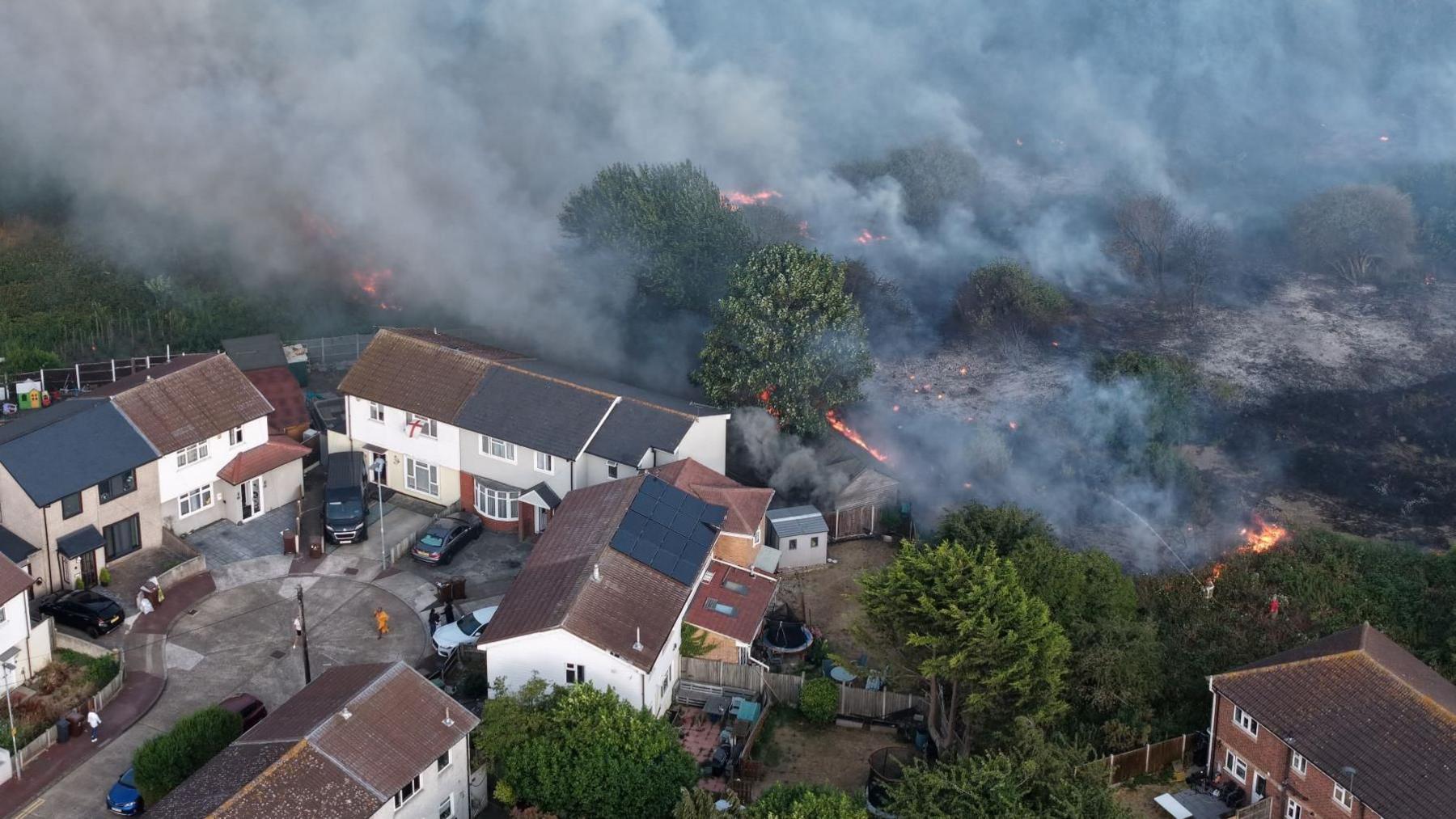What can London learn from Seville on heatwaves?
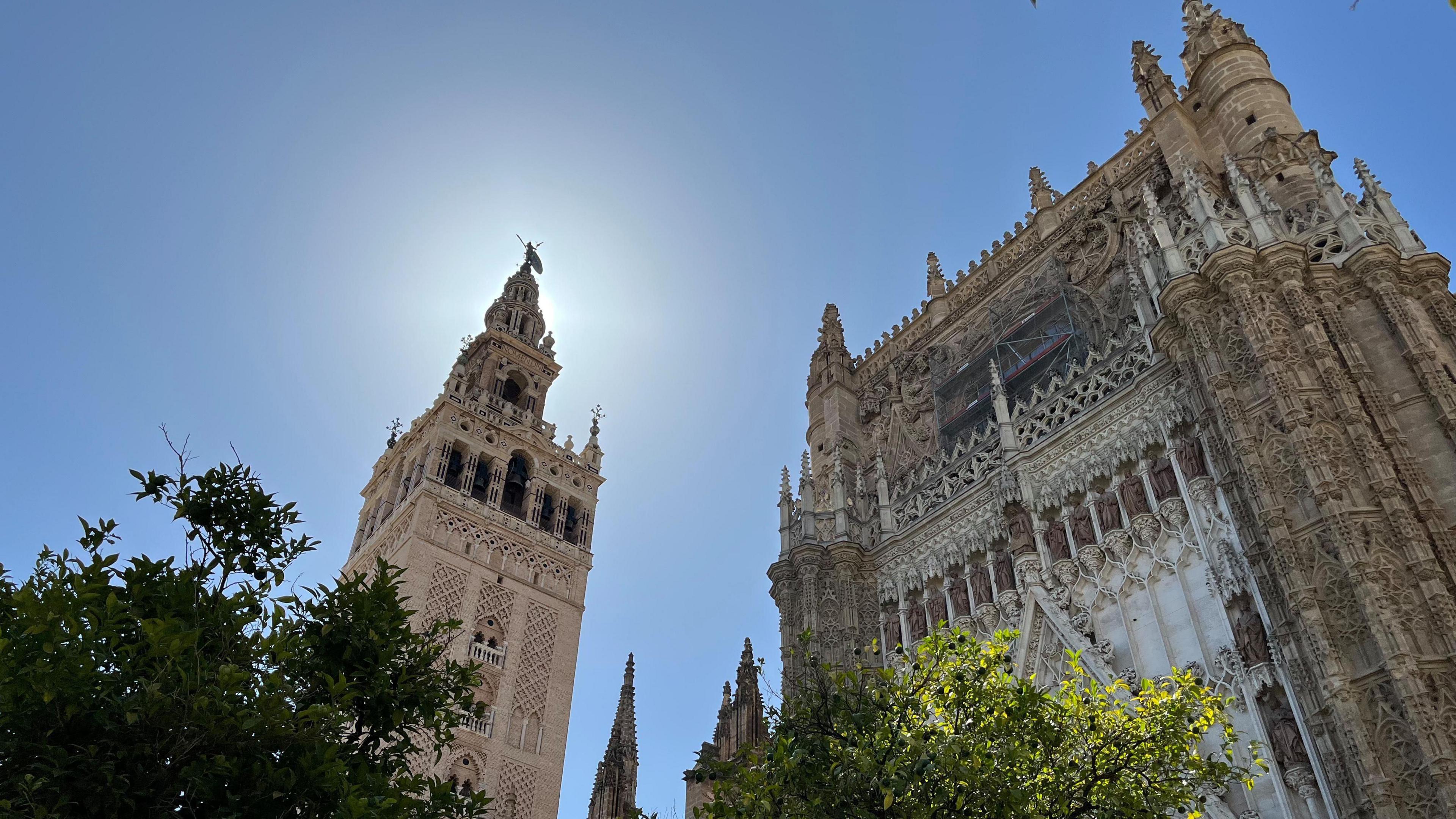
Seville regularly has temperatures above 40 degrees
- Published
It is like a hair dryer blasting you in the face. It is nicknamed the "Iberian Oven" for very good reason.
It is a dry heat, but get caught for long in the sun and you really feel it.
It is 3pm in Seville in Southern Spain and the temperature is about 40 degrees.
You catch fragments of conversations:
"It's manageable in the shade."
"At least it's not 50 degrees!"
This vibrant, ancient, beautiful city is one of the hottest in Europe and the temperatures are becoming more and more severe.
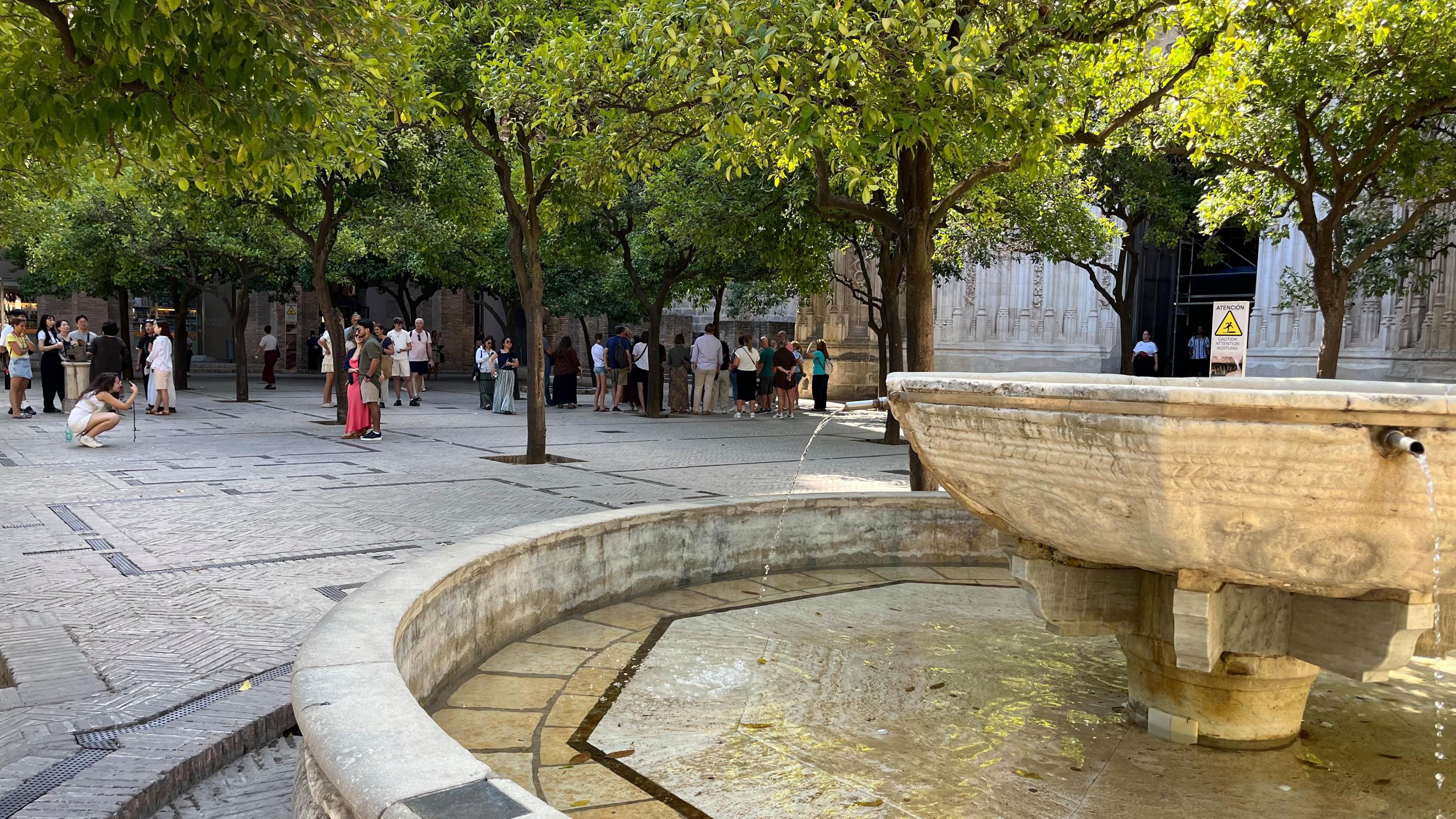
Trees and water are regularly part of Seville's architecture
In Seville, they are having to adapt and change to the increasing temperatures.
So as the capital faces more and more extreme heat, could perhaps London learn a little from other cities like Seville?
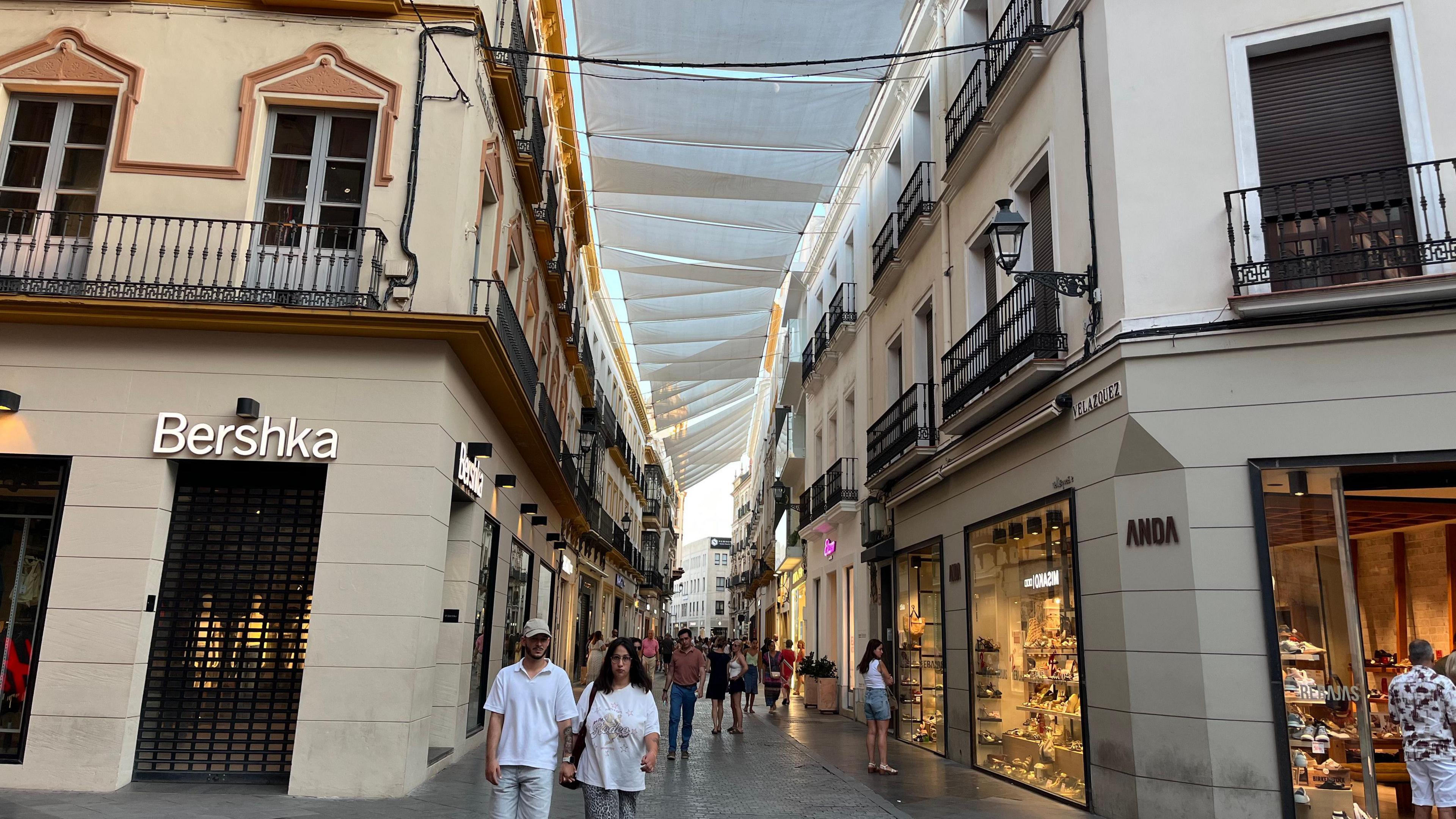
On shopping streets, shade is created with awnings
In the temperatures of Seville, shade is a necessity. Trees and running water fountains that cool the environment are very common in the old part of Seville. The buildings are close together which creates shade.
In the newer areas, awnings are tied across shopping streets to create shade. Most public buildings have air conditioning where people can take refuge from the temperatures during heatwaves.
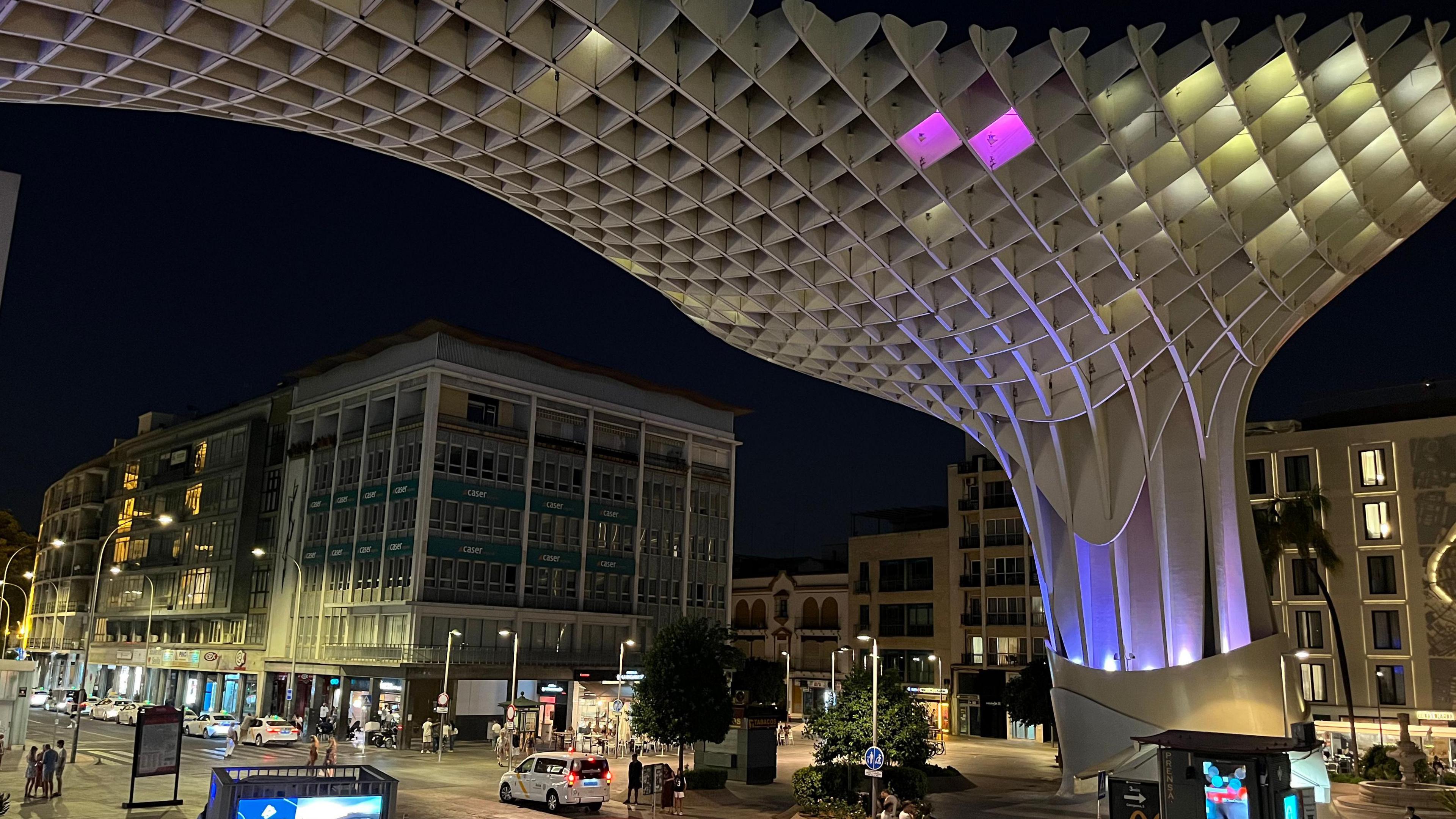
Setas de Sevilla originally was to be called the Metropol Parasol
In the centre of Seville is the huge wooden structure called Setas de Sevilla.
It was originally going to be called the Metropol Parasol.
As well as creating a magnificent spectacle, it also shades the whole of that area creating a cool plaza.
It also gives you an idea of how creating shade is a big part of the city's identity.
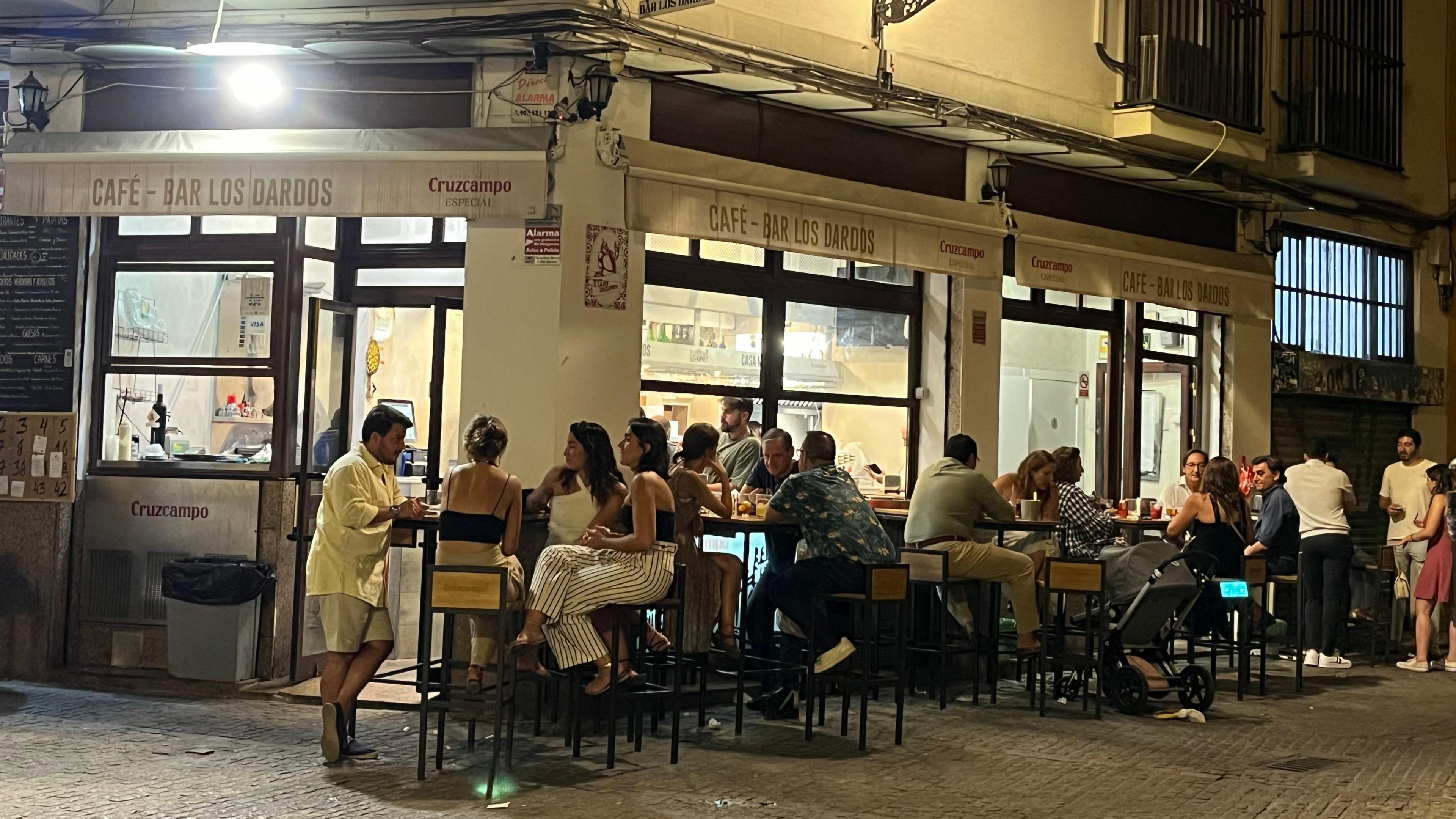
Locals go out late in Seville
Of course, the best way to avoid the heat is not to go out in it.
And in Seville, many of the bars and restaurants close during the afternoon.
Behaviour has changed over the centuries and the siesta is part of Spanish life. Locals seem to go out late, after 8pm, once the heat has abated.
Dr Mehri Khosravi is an expert in heat at the University of East London and says Londoners need to change their attitude to extreme heat and we can learn from our continental neighbours.
"We need to adapt in terms of building design. But we need to adapt our behaviour especially in the UK where the culture of heat is missing. People in the UK treat heat as a nice thing - they arrange BBQs and leisure activities but we need to start treating it as a risk like they do in other countries.
"In the hottest hours of the day, they pause some activities and then they resume it in the evening.
"Or when you walk into a street during the day, and the sun is out they never open the windows. Curtains are shut so they don't let the heat in. They use night for ventilation.
"These simple changes in behaviour, the changes in routine, can make a big difference in how to deal with heat and we can learn from those countries."
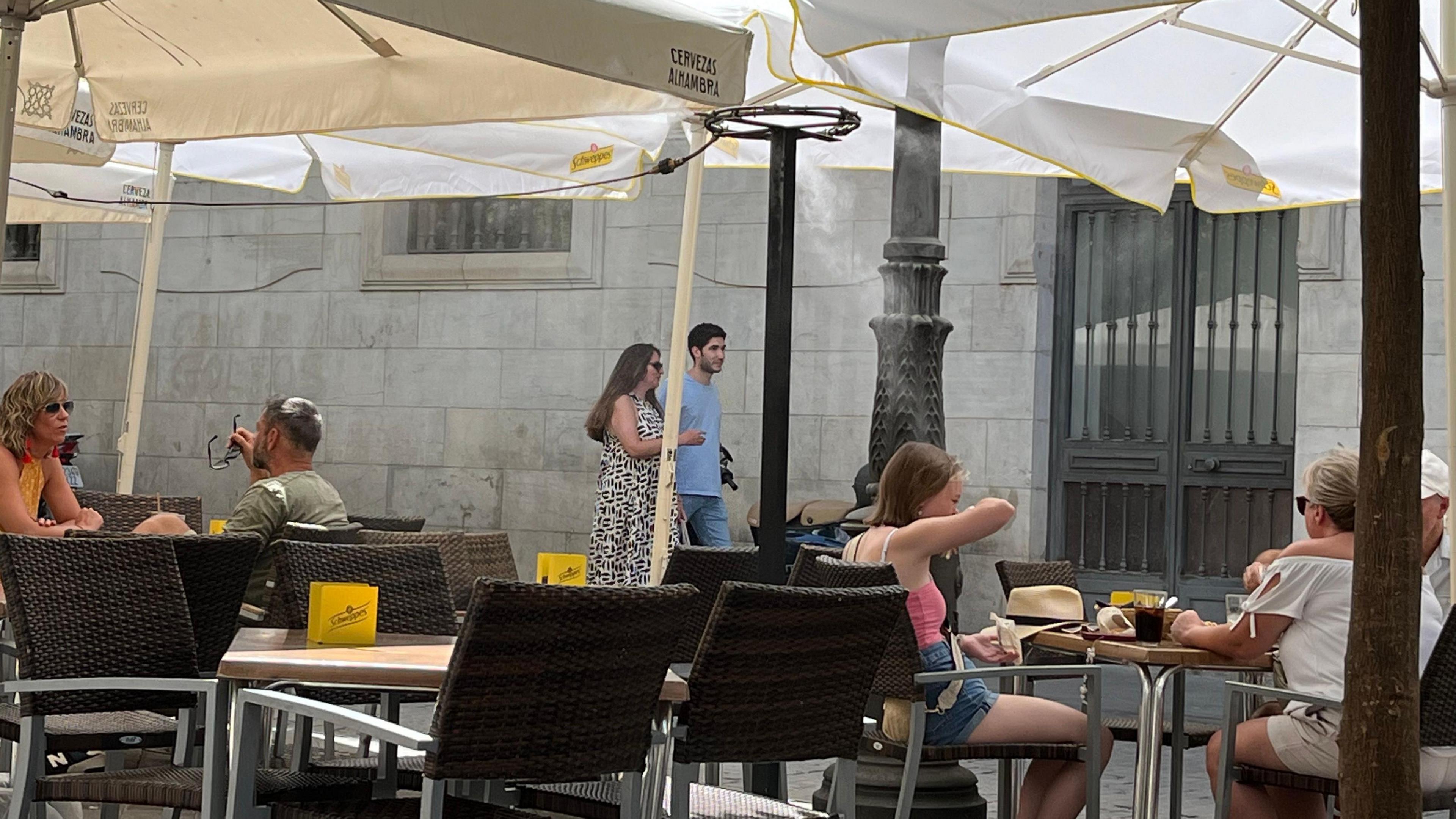
Many restaurants use water mist to keep customers cool
In Seville, many of the cafes have also introduced a practical solution.
There are water misters in the canopies outside. So you get sprayed with a thin, cooling mist of water while you wait for your tapas. It drops the temperature a few degrees.
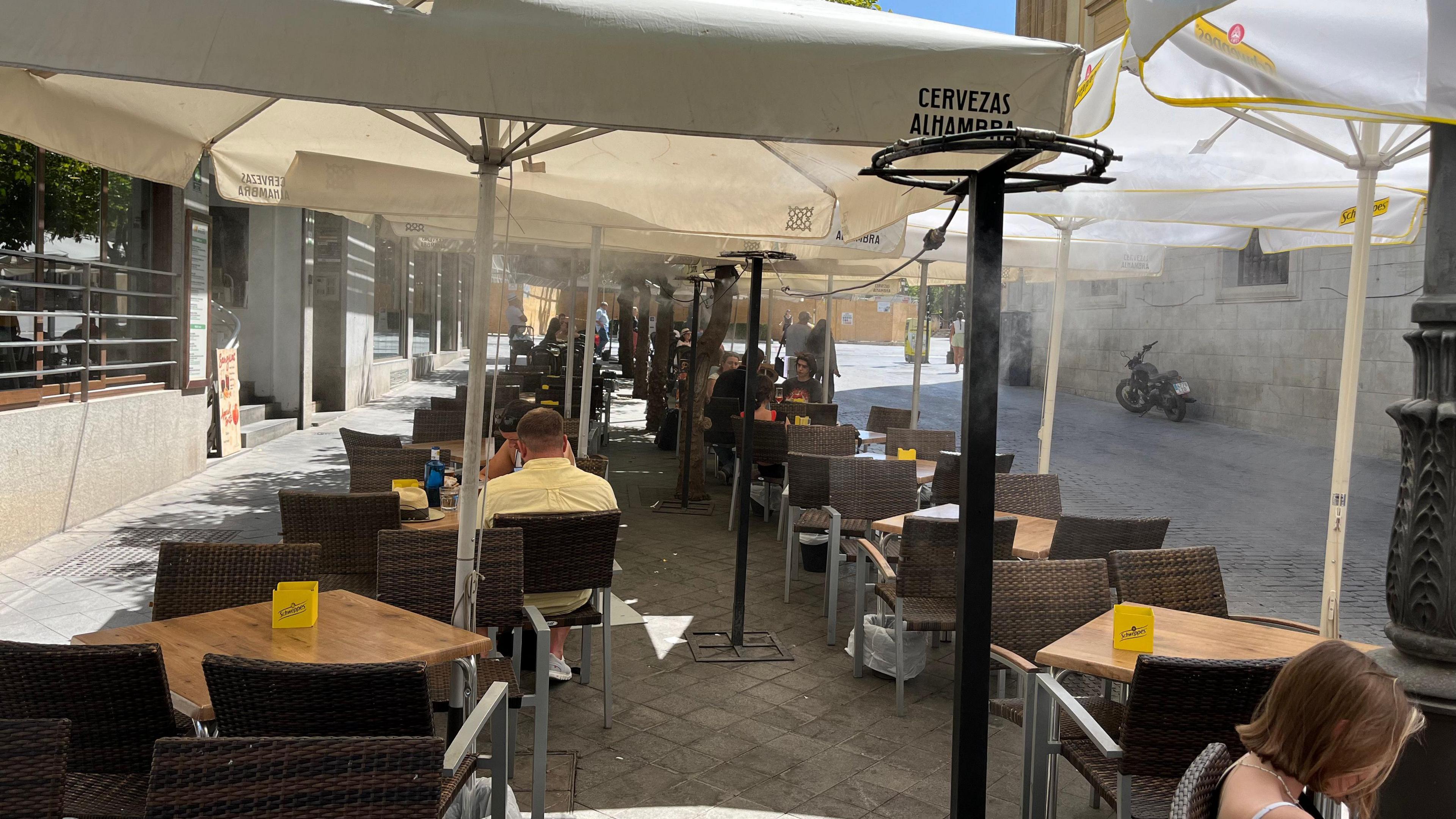
Water misters in a cafe
In 2022, Seville became the first city to name heatwaves with Heatwave Zoe. The aim is to raise awareness and people take precautions. Other cities like Athens are now looking at the idea.
Elsewhere in Italy, heatwaves have been called Cerebus and Charon although it has been contentious and not everyone agrees it helps.
In the UK, storms are now named and that seems to be accepted. It's not a huge leap to see heatwaves also getting the same treatment.
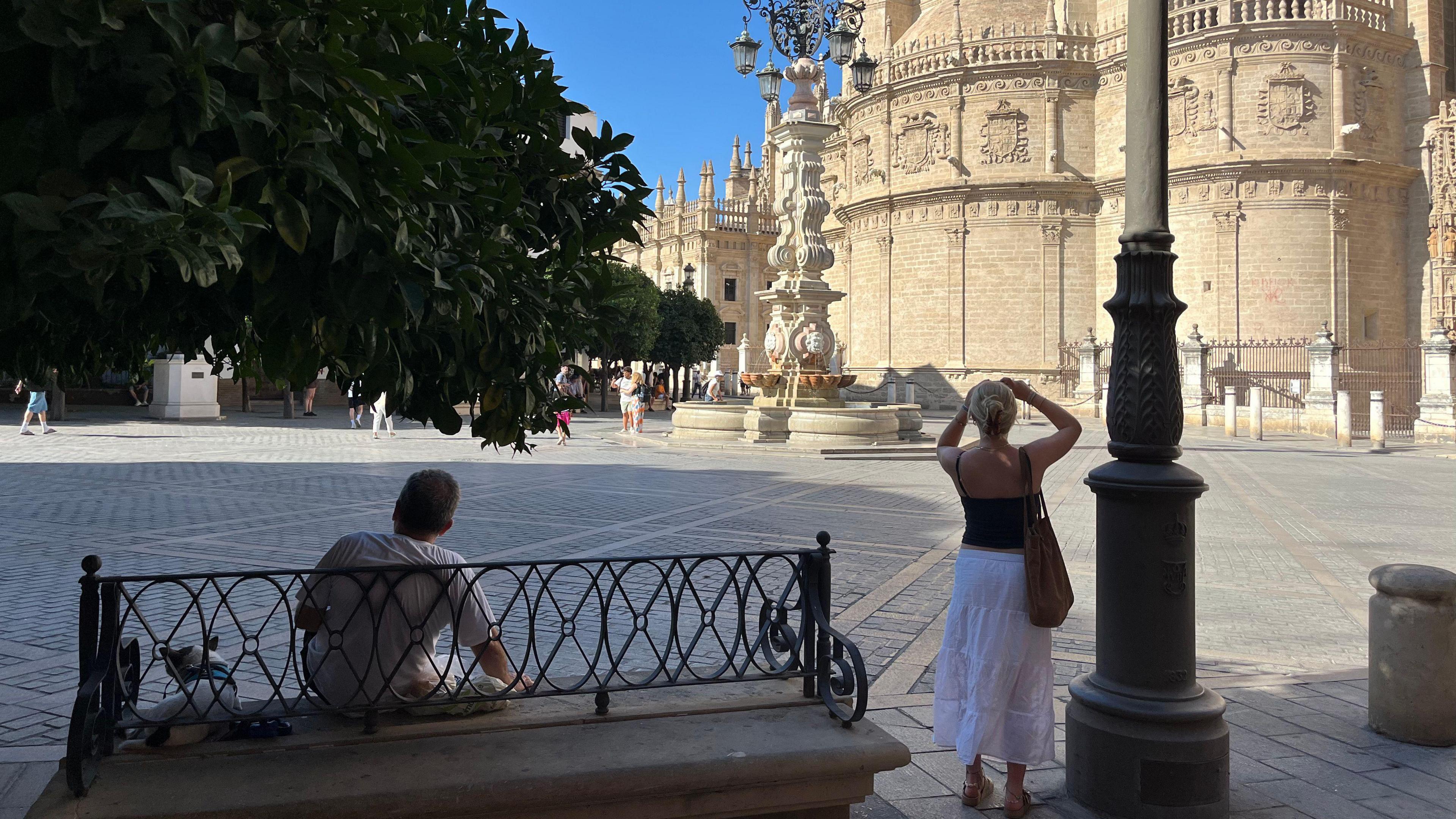
Trees in the plaza in front of Seville Cathedral
Since 2022, in London, changes have been made. Then temperatures hit a record-breaking 40.2C.
The extreme heat caused wildfires with the Wennington wildfires in 2022 declared a major incident and a number of homes destroyed. On 19 July, the LFB experienced their busiest day since World War Two.
After that a report from the independent London Climate Resilience Review said London must "better prepare" for severe floods and heatwaves caused by climate change.
There has been an exercise called Operation Helios by agencies to identify how problems in heatwaves can have knock-on effects.
Also a cool spaces map has been developed which shows a network of indoor areas that provide Londoners with shelter in hot weather. Water fountains have been distributed across the city to provide free tap water all year round.
A climate risk map has been developed that helps London boroughs identify which communities are at the highest risk from extreme weather events.
Water refill points
The London Heat Risk Delivery Plan , externalis currently being developed. It will "better prepare London for rising temperatures and extreme heat from climate change".
The Mayor of London is also committed to increasing London's tree canopy cover by 10% by 2050.
Mete Coban is the deputy mayor, also responsible for environment and energy.
He said: "The first thing that we're doing is publishing a cool spaces map so we are signposting places to residents where they can go to cool off.
"The second thing that we're doing is making sure we have much more water refill points - over 4,000 across the city - to make sure Londoners stay hydrated.
"Our tree planting programme especially to create that shade, the mayor has planted over 600,000 trees across the city since 2016."
Listen to the best of BBC Radio London on Sounds and follow BBC London on Facebook, external, X, external and Instagram, external. Send your story ideas to hello.bbclondon@bbc.co.uk, external
Related stories
- Published10 July
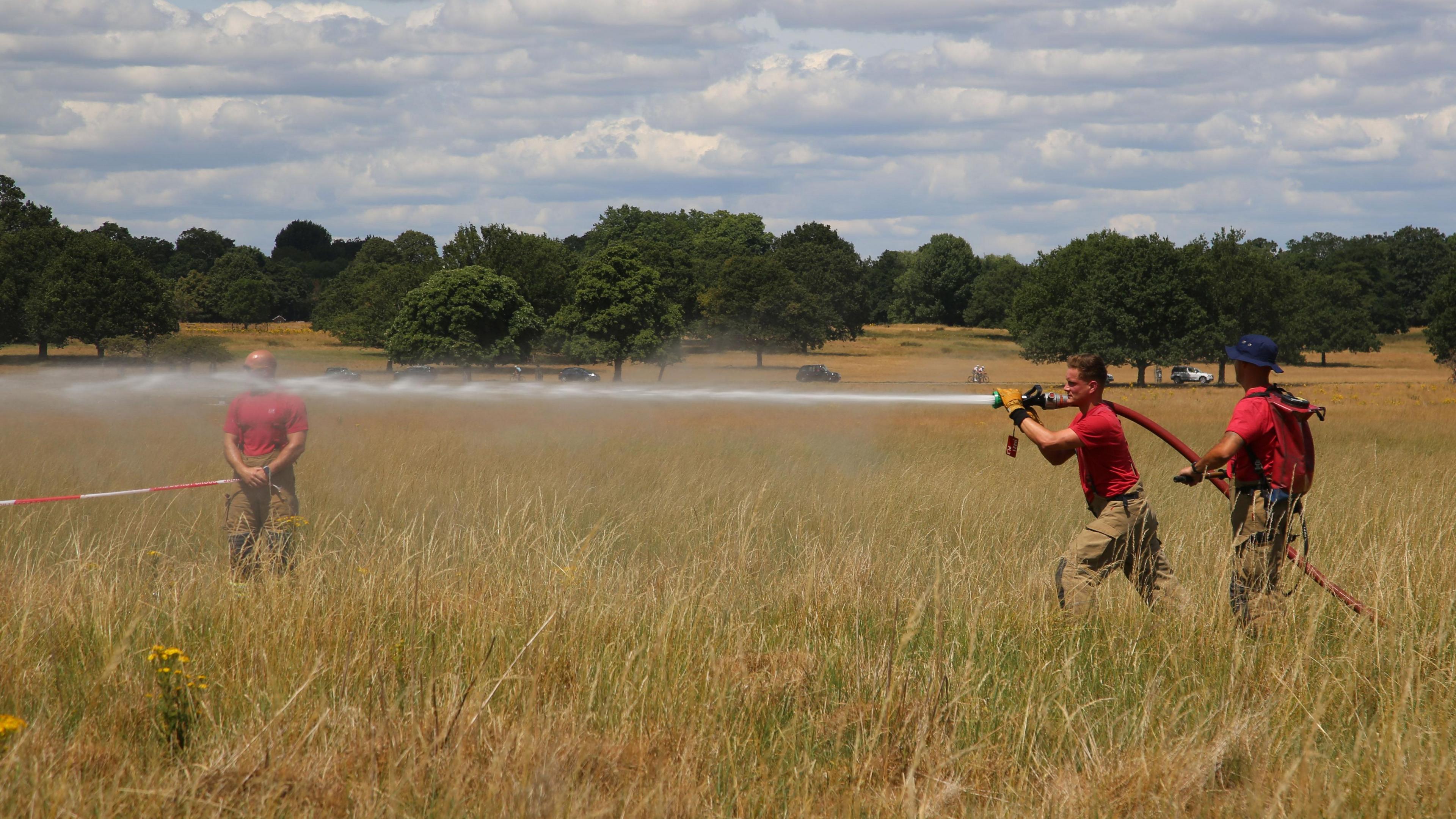
- Published16 July
